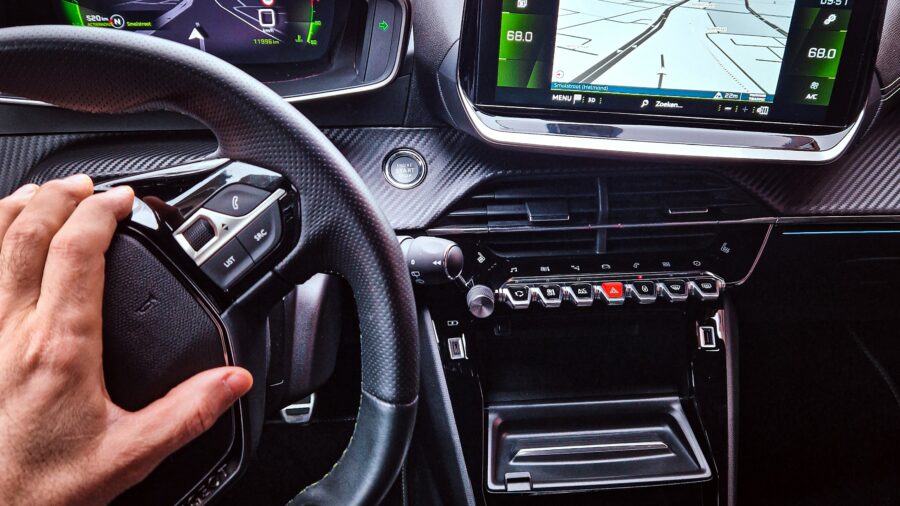Driving distractions are increasing. Distraction is also one of the hardest things to track, measure and prevent. Many tech functions in cars, such as touchscreens, only distract you more. Meanwhile, new US research shows delivery drivers, parents and young people are more distracted than others while driving.
Unfortunately, the same technologies can help or distract drivers. In fact, there’s a vital distinction between tech functions likely to distract from driving and tech functions supposed to help you drive.
The distractions of in-car tech
It’s ironic that the inside of your car can be as distracting as the world outside it. One study claims nearly half of all major crashes in the UK are because of inattention caused by using infotainment systems and driver assistance tech.
As one spokesperson said, they’re the “ultimate back-seat driver, interrupting the task of driving”.
New cars continually issue warnings and alerts for problems that aren’t always relevant or important. For example, continual beeping because you accidentally put your handbag on the passenger seat and the car thinks it’s a person not wearing a seatbelt.
Meanwhile, cars are fitted with cameras, radar and other sensors so they can take over some of the responsibilities of driving. EuroNCAP requires these types of features to award a vehicle 5 stars. But do drivers really know what they do? A recent German study suggests newer cars (with more tech) are overrepresented in accidents at junctions or when joining traffic.
One potential driving distraction is touchscreens in cars.
Why touchscreens are driving distractions
Do you find touchscreens distracting? In 2020, a study by TRL (formerly the Transport Research Laboratory) found drivers used touchscreens to look up directions, change songs, or (in the UK) respond to text messages.
Doing this while driving slowed their reaction times to external stimuli by 53-57%. This was 46% slower than their response time while answering a handheld mobile phone. It was even slower than driver response time to external stimuli at the legal alcohol limit.
Touchscreens are highly distracting, according to these UK findings. They can also be tricky to use accurately when the road is bumpy and they involve choosing from menus. However, more research is needed on the consequences of drivers making multiple short glances away from the road towards touchscreens.
The distractions of phone apps
The growth in phone apps has created new types of work, such as rideshare and delivery drivers. But this has increased driver distraction too. A new survey of 2,000 drivers in the US, by the Insurance Institute for Highway Safety (IIHS), asked what people did while driving in the past 30 days. Nearly two-thirds said they did one or more distracting activities most or every time they drove.
Gig-economy workers, such as delivery drivers, were more than twice as likely to do something distracting and nearly 4 times as likely to use phone apps while driving. Their use of these apps went well beyond the requirements of the job, like finding their way to delivery locations.
Parents, more so than drivers without children, were nearly 50% more likely to make video calls, check weather reports or use another app while driving. They were also 65% more likely to do other distracting tasks.
Meanwhile, drivers 18 to 34 were more likely than those 35-49 to use phone apps while driving and 8% of all drivers said they regularly play games while driving!
In Australia, it’s illegal to hold a mobile while driving but legal to talk hands free. However, the parts of the brain that handle spatial sense, navigation and visual information are also used in a phone call. This means even hands-free calling takes 40% of mental resources away from the task of driving.
It’s difficult to change behaviour
Just as driver behaviour is difficult to change, it’s equally difficult to change all the factors involved in driver distraction. You can’t blame a driver if their car has a touchscreen in it.
There is an ecosystem of influences contributing to distraction. For example, manufacturers of touchscreens and mobile phones, carmakers who install in-vehicle infotainment, the physical environment around a road (eg, flashing ads or roadwork), behaviour of other drivers, children in the back seat – and employers who need their gig-economy workers to use phones on the job.
Read more about driver distraction and how we are more influenced by rewards than risks.


your opinion matters: